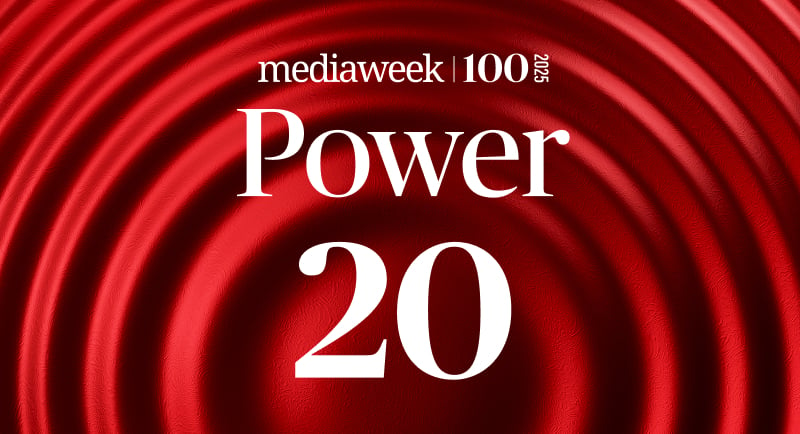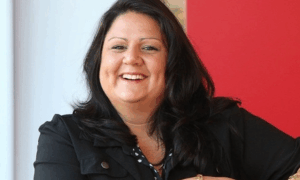
Maryna Fewster
Chief Executive Officer, Seven West Media WA
Maryna Fewster has solidified her role as a regional media heavyweight, steering Seven West Media WA through a year of resilience and local leadership while integrating broadcast, journalism and community platforms more tightly than ever.
In FY25, The West held EBITDA broadly flat at $27 million, reflecting strong execution on strategy by growing digital audiences and paid subscribers, leaning into print products, reducing costs and delivering new revenue opportunities.
Fewster’s strength lies in regional complexity. Under her leadership, editorial, especially The Nightly, broadcast and commercial divisions have been more closely knit, yielding consistency in messaging, audience experience and advertiser outcomes.
She has maintained stable advertiser relationships in a volatile market and managed investments in content, people and infrastructure both in metro Perth and across regional WA.
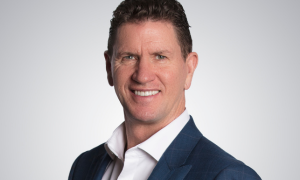
Damian Keogh
Chief Executive Officer, Hoyts Group & Val Morgan
Damian Keogh has led one of the most ambitious reinvestment and integration strategies in Australian screen media, transforming Hoyts and Val Morgan from siloed operators into a unified platform for cinematic and cross-screen activation.
Keogh has overseen a $300 million plus investment program across Hoyts, including upgrades to recliner seating across more than 80% of screens, expansion of premium LUX experiences, and the development of flagship cinema sites.
He has also driven growth in Val Morgan, repositioning it to unify cinema, outdoor and digital assets under a cross-media platform strategy. In 2025, Val Morgan rolled out its Validate data platform and Category Entry Packs, consolidating audience measurement and targeting across cinema, outdoor and digital channels.
Under his leadership, integrated briefs (campaigns that span multiple Val Morgan channels) have risen around 23%, and the company delivered roughly 14% revenue growth in a weak market, outperforming competitors.
In announcing Hoyts’ Reflect RAP (Reconciliation Action Plan), Keogh reinforced social purpose at the company’s core, emphasising respectful representation on screen and deeper engagement with First Nations communities.
Keogh’s strategic balance of innovation and accountability is remaking screen media in Australia.

Kylie Watson-Wheeler
Senior Vice President & Managing Director, Disney ANZ
Kylie Watson-Wheeler is at the helm of Disney’s vast ANZ portfolio, guiding how global storytelling and local relevance come together through streaming, theatrical, content and consumer products.
In 2025, under her leadership, Disney has expanded its integration of theatrical releases and streaming premieres in Australia and New Zealand.
As part of this, she oversaw the deal extension of ESPN via Disney+, bringing live US sports, including NBA and WNBA, directly into Disney’s streaming ecosystem. “It further enriches our already strong and unique content offering, boosts value for subscribers, and serves sports fans anytime, anywhere,” she told Mediaweek about the ESPN launch.
Her remit stretches across film, TV, digital, streaming, live events, consumer products and distribution.
Watson-Wheeler’s influence is felt in how Disney competes locally, not just as a global studio, but as a media company that invests, partners and commissions in Australia.
She shows how international entertainment brands must work intimately with local stories, strategies and communities to remain compelling, trusted and competitive in the ANZ market.

Peter Charlton
Chief Executive Officer, Nova Entertainment
Peter Charlton has registered several significant strategic moves this year that underscore his impact on the radio and audio sector.
One of the most notable is NOVA’s exclusive Australian partnership with FlightStory and its flagship podcast brand The Diary of a CEO. Under Charlton’s leadership, NOVA secured the rights to represent the podcast catalogue of FlightStory in Australia, giving Australian advertisers access to a portfolio boasting 25 million followers and 11 million YouTube subscribers globally.
Beyond content partnership, this year Charlton has continued to navigate the company through a challenging media-market environment, where audience fragmentation, digital competition and advertising pressure demand adaptive strategy and commercial agility.
He has diversified Nova’s offerings across radio, podcasting and streaming, integrating data partnerships that connect listener behaviour to campaign outcomes.
At the same time, Charlton has preserved a culture of creative energy underlying the network’s identity investing in talent, local programming and audience connection in a way that supports growth and loyalty.

John Kelly
Chief Executive Officer & Managing Director, Southern Cross Austereo
Southern Cross Austereo ended FY25 with John Kelly delivering a year of solid growth, sharper cost control and the company’s first digital audio profit since launching LiSTNR.
This is a symbolic milestone in SCA’s shift from a broadcast-centric company to an “all-audio” business. Digital audio revenue jumped 28.8% to $45.1 million, driven by stronger podcast monetisation and 2.4 million signed-up users.
His leadership matters not just because of growth, but because of how he’s positioned SCA for the next chapter.
The network has now fully exited television broadcasting, selling remaining TV assets to Seven West Media.
He’s also actively playing a pivotal role in the proposed merger with Seven West Media, where he is slated to become Group Managing Director, Audio as the merged company reorganises around total media (TV, streaming, digital, audio).
Kelly’s success lies not just in numbers, but in how he has redefined the trajectory of audio media in Australia, proving that heritage networks can pivot and compete in streaming-led environments, while playing a foundational role in reshaping the media landscape through consolidation and integration.

Jane Huxley
Chief Executive Officer, ARE Media
In FY25, Jane Huxley guided Are Media through one of the most transformative periods, balancing growth, digital expansion and corporate change with characteristic clarity and control.
Under Huxley’s leadership, Are Media announced a landmark partnership with Dotdash Meredith (DDM), giving the publisher access to global brands such as PEOPLE, Allrecipes and Real Simple.
The move immediately lifted its digital footprint to more than 10 million monthly users. Huxley called it “a transformational moment” that positioned Are Media as a truly omnichannel lifestyle company.
At the same time, Are Media entered a formal sale process, with KPMG engaged to explore ownership options. Huxley framed the move as “coming from a place of strength,” assuring staff that “nothing changes day to day” as the business continues to deliver growth and plan ahead for FY26.
Huxley has also committed the company to social purpose work. Its Change AREgenda campaigns have tackled pressing issues such as coercive control, financial abuse and carers’ superannuation.
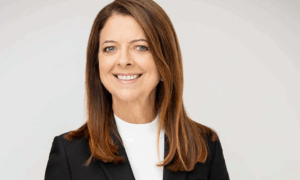
Cathy O’Connor
Chief Executive Officer, oOh!media
In FY25, Cathy O’Connor delivered a high-momentum year for oOh!media, positioning the company strongly within out-of-home (OOH) media as she prepares to hand over the reins to the new CEO, James Taylor.
The company reported a 17% increase in revenue for the first half of FY25 and projected similar growth in Q2 and the full year.
Improved sales execution has been central to that revenue growth with O’Connor telling Mediaweek in August, “Our strategy is to make our media simpler, faster, and smarter, which are all resonating with customers.
“We had good growth in the majority of our formats, and 80% of that growth came from existing assets.”
O’Connor’s impact has been felt across the whole industry: she has helped redefine what outdoor media can be: measurable, creative, and tech-enabled.
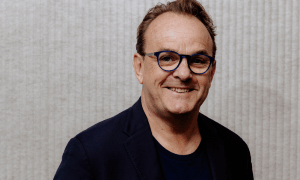
John O’Neill
Chief Executive Officer, QMS Media
John O’Neill is leading QMS through what seems to be a defining moment in the outdoor media sector, as both scale and innovation become essential to winning in a fragmented, digital-first advertising landscape.
In 2025, under his leadership, QMS completed the acquisition of the remaining 45.13% stake in MediaWorks from Oaktree Capital, giving it full ownership of the New Zealand media business.
The consolidation strengthens QMS’s footprint across the Tasman, combining radio, digital, and digital out-of-home (DOOH) assets under one roof. QMS NZ now hold the Auckland Transport account, previously held by oOh! media.
Simultaneously, O’Neill has driven growth in QMS’s digital outdoor inventory, which is now 95% digital, and has pushed aggressive programmatic expansion across formats.
He’s also leaned into high-impact creative formats including 3D digital billboards and full-motion DOOH while boosting investment in performance-oriented advertising, retail-focused campaigns and media-tech tools for better targeting and ROI.
O’Neill has described Australia’s out-of-home sector as “the envy of the world,” citing its share growth to 17% of ad spend, and forecasting OOH’s rise to 20% by 2030.
His influence in 2025 stretches beyond just asset consolidation. It lies in redefining how old-media formats like outdoor and radio are reinvented via digital, programmatic and cross-platform integration.
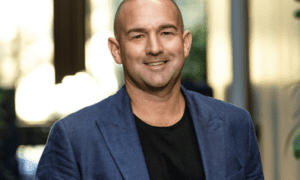
Mark Frain
Chief Executive Officer, Foxtel Media
Mark Frain is driving a fundamental shift in how television advertising is priced, sold and measured in Australia turning Foxtel Media from a broadcast-centric sales house into a video-first, data-driven ad business.
Over the past year, Frain has accelerated the transition to impression-based trading, allowing advertisers to buy audiences by outcome rather than by airtime.
In a recent article, he wrote: “Impressions are the starting point… converting linear ads into digital impressions offers the best chance of rewriting the script.”
Foxtel’s exit from OzTAM under his direction also reflects this ambition: the company is partnering with Kantar to adopt digital-first measurement across OTT and set-top box inventory.
Since DAZN completed its acquisition of Foxtel Group, including Foxtel Kayo Sports and Binge, Frain has been influential in setting the market’s expectations.
“There was a market expectation, which is wrong, that (Foxtel Group streaming) is all about sport, moving forward. It’s definitely not,” he said in a recent interview.
“What Binge provides DAZN is an opportunity to bolster and complement sport.”
He has also been influential in pushing cross-screen measurement and unified sales.
By championing outcome-based trading, more precise ad metrics and a shift from legacy TV models, he is reframing agency expectations and nudging the broader industry toward digital accountability.
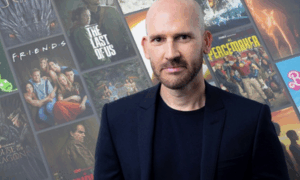
Michael Brooks
Managing Director, Warner Bros. Discovery ANZ
Michael Brooks is steering a broad and increasingly ambitious remit at Warner Bros. Discovery, forging the connection between content production, streaming strategy, and platform positioning in ANZ at a time the streaming market is more crowded than ever.
A major focus under his leadership in 2025 was the launch of HBO Max, WBD’s entry into the local streaming wars. Brooks has repeatedly emphasised that “content dictates success”, pointing to WBD’s deep library from HBO, Warner Bros., DC and Discovery and its track record in premium drama as foundation stones.
Brooks also oversees all of WBD’s non-theatrical businesses around Australia and New Zealand, including networks & streaming, content licensing, home entertainment, consumer products & games, as well as Warner Bros. International Television Production Australia (WBITVP).
Also under his oversight, WBD is navigating complex partner negotiations, including maintaining licensing and output deals with Foxtel and Nine, while forging new advertising relationships.
Brooks’ work in 2025 is helping set the foundation for what it means to launch and sustain a global streaming brand in a local market.
By leaning into content quality, aligning brand identity, and committing to local production, he is shaping how premium streaming services can both compete and earn trust with Australian audiences.
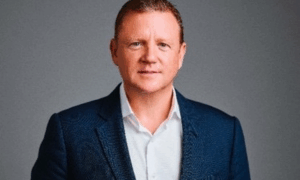
Chris Taylor
Managing Director, APAC – TV Distribution & International Networks & DTC, NBCUniversal
Chris Taylor is central to NBCUniversal’s push to scale content reach and monetisation across Asia Pacific, bridging distribution, networks and direct-to-consumer in a rapidly evolving TV ecosystem.
In early 2025, NBCUniversal promoted Taylor to MD, APAC, TV Distribution & International Networks & DTC, expanding his remit beyond Australia & New Zealand to lead sales, content licensing, network operations and streaming strategy across the broader region.
He retains oversight of the ANZ operations while taking on new leadership across Southeast Asia and other key markets.
Taylor has been influential in securing long-term content licensing deals, building NBCU’s market presence and launching local free-to-air integrations such as 7Bravo in Australia and Bravo NZ.
His commercial strategy is marked by dual emphasis: scale across linear and non-linear channels, and maintaining negotiated licensing terms that reflect shifting viewing habits.
Taylor’s influence in 2025 is helping reframe what content distribution can be in APAC: not just exporting shows, but integrating local partners, tailoring licensing models, and aligning with streaming strategies that demand flexibility.

Beverley McGarvey
President, Network 10; Head of Streaming & Regional Lead (Australia & New Zealand), Paramount ANZ
In 2025, Beverley McGarvey solidified her role as a key strategic leader at Paramount ANZ, chairing both the free-to-air broadcaster Network 10 and the streaming/region operations across Australia and New Zealand.
Following her appointment as President of Network 10 and Head of Streaming & Regional Lead in 2024, she has spent this year driving the company’s multi-platform strategy, emphasising the intersection of broadcast scale, digital growth and global content partnerships.
McGarvey has also been front-and-centre amidst Skydance Media’s merger with Paramount Global.
Her leadership spans not just domestic operating performance, but also how the local business dovetails with global media shifts, content alignment and commercial scale.

Hwei Loke
Head of Prime Video Australia & New Zealand
Hwei Loke is leading Prime Video’s most ambitious era in ANZ, steering local commissioning, sports rights and ad tiers to deepen engagement and platform relevance.
She oversees customer growth, marketing, portfolio management, live sports, Originals and third-party content across Australia and New Zealand.
In 2025, Loke has delivered Prime Video’s most ambitious slate yet commissioning a record number of Australian Originals, from scripted series and documentaries to global co-productions.
They include Australian projects like The Narrow Road to the Deep North and Top End Bub.
Our content team also closed landmark deals with Sony Pictures Entertainment and Roadshow Films, securing exclusive Pay-1 streaming rights to all theatrical releases from the studios..
She also oversaw the platform’s rollout of an ad tier in mid-2024, which automatically moved many existing users into the ad version unless they upgraded, giving Prime Video flexibility to monetise a broader consumer base.
Her leadership reflects Amazon’s evolving media ambition: connecting entertainment, e-commerce and technology under one ecosystem.
By aligning cultural investment with commercial innovation, Hwei Loke is redefining how global streaming brands engage with Australian audiences and ensuring that Prime Video stands not just as a platform, but as a powerful contributor to the local screen industry.
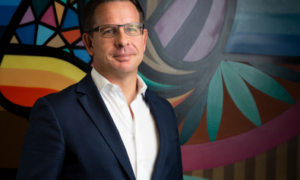
Will Easton
Managing Director, Meta Australia & New Zealand
Will Easton is guiding Meta through one of its steadiest yet strategic periods in the region, balancing innovation and regulatory pressures while reinforcing the platform’s value to advertisers, creators and publishers alike.
Under his leadership, Meta ANZ has rolled out AI-driven ad tools, improved measurement systems, and strengthened monetisation options for creators across Facebook, Instagram and Threads.
Easton has also championed transparency and accountability in Meta’s operations in Australia.
In late 2024, Meta introduced stricter verification rules for financial services advertising, requiring advertisers to verify beneficiary and payer information (including their Australian Financial Services Licence) before placing ads, and programmed “Paid-for-by” disclaimers to enhance ad transparency. Easton described the move as “an important step towards protecting people from sophisticated scammers” in Australia.
Easton’s stewardship is helping stabilise Meta’s position in Australia, steering its platforms through regulatory headwinds, growing advertiser trust, and rolling out AI and measurement tools that support evolving ad strategies.
His work shows how technology leadership in media today is as much about discipline, governance and partnership as it is about raw innovation.

Jeff Howard
Managing Director & CEO, Seven West Media
Jeff Howard is steering Seven West Media through a digital pivot. Under his leadership, the company is leaning heavily on its streaming platform, 7plus, to counteract challenges in traditional broadcast.
In FY25, Howard oversaw a total ecosystem where group revenue dipped by 4% to A$1.354 billion, but the decline moderated to -2% in H2, indicating traction behind the new operating model.
Central to this was the performance of the BVOD platform 7plus, which achieved +27% growth in daily active users, a 41% increase in streaming minutes, and +26% revenue growth for the full year.
“We’re almost on the verge of 7plus growth offsetting the broadcast TV decline, which will be a significant milestone, and certainly one that gives us a very different future when that happens,” Howard shared in August.
Under Jeff Howard’s leadership, Seven West Media (SWM) made a major strategic move by committing to merge with Southern Cross Austereo (SCA).
The resulting business would be overseen by Howard, who would become managing director and CEO of the combined group.
The tie-up aims to bring together complementary assets across free-to-air television, streaming, audio, digital and publishing, and deliver annual pre-tax cost synergies of A$25-30 million within two years.
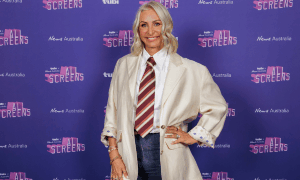
Lou Barrett
Managing Director, National Sales, News Corp Australia
In 2025, Lou Barrett has prioritised her focus on video scale, digital integration and client-outcome leadership, positioning the business to meet changing advertiser demands.
She has been central to News Australia’s push to re-define video and streaming advertising in Australia, steering its evolution into a unified, cross-screen offering that challenges the conventional boundaries of CTV, BVOD and streaming.
Over the past year Barrett has been driving the rollout of News Corp’s All Screens for All Australians strategy with Tubi, Fox’s ad-supported streaming service.
The exclusive partnership with Tubi gives News Corp access to scale in the connected TV space, including 1.3 million monthly Australian viewers to date, and adds long-form streaming to its existing strong short-form news inventory.
Her focus extends beyond reach: Barrett is sharpening the company’s offering around engaged reach and measurable ROI.
At D_Coded and other industry forums she has emphasised video ad formats with lower ad loads, premium environments, and more precise targeting, enabled through tools like Intent Connect and audience intent signals.
Asked about Tubi and its potential in Australia, she told Mediaweek: “Tubi is the big one … We haven’t had any CTV in our stable before, which allows us to engage with advertisers who have traditionally focused on broadcast TV and streaming services.”
She has also placed commercial accountability at the heart of her sales leadership. “Marketers increasingly seek outcomes beyond mere reach and are looking for more meaning to stand out from the sea of sameness,” she said in a recent interview.
Her approach combines data-driven measurement, engaged-reach metrics and audience intelligence, strengthening News Corp Australia’s offer in a fragmented media market.
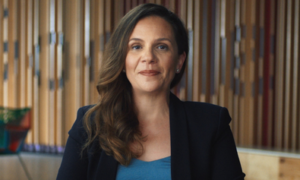
Melanie Silva
Managing Director & VP (Australia & New Zealand), Google
Melanie Silva is accelerating Google’s role as a vital partner in Australia’s digital ecosystem, driving investment in AI, infrastructure and skills at a moment when trust and accountability are under the spotlight.
In 2025, Silva is overseeing Google’s ambitious Digital Future Initiative, a multiyear, A$1 billion commitment to infrastructure, research, and local partnerships. The initiative is central to Google’s local strategy, supporting programs in health tech, environmental modelling and digital skills.
Under her watch, generative AI tools have been integrated into core Google products like Search and Ads; she also speaks openly about balancing speed of innovation with governance.
At a recent Leadership Matters event she cautioned that AI’s potential must be “paired with regulation and guardrails”: “The goal of our principles is to balance a boldness and innovation with a sense of responsibility in our approach,” she said.
Silva remains deeply engaged with government, industry and the media. Her public statements often stress the importance of asking long-term question, not just about how to use AI, but why and with what safeguards.
Her impact goes beyond technology. Silva has worked to support SMEs in adopting AI, empower creators and publishers through Google platform partnerships, and maintain Google’s role as a trusted, technically ambitious, yet accountable participant in Australia’s digital economy.
In 2025, she exemplifies how big tech leadership must combine innovation with responsibility, helping ensure Google is not just a growth engine, but a constructive force in the evolving media and marketing landscape.
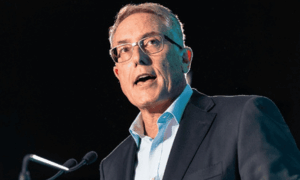
Patrick Delany
Chief Executive Officer, Foxtel Group
Patrick Delany is leading Foxtel through one of its most consequential transitions, steering the business into DAZN’s global orbit while reshaping its structure and strategy for a streaming-first future.
In April 2025, Delany finalised Foxtel’s A$3.4 billion acquisition by DAZN, a deal that transfers ownership while preserving Foxtel, Kayo Sports and Binge as distinct brands.
Foxtel will continue operating locally, but now benefits from DAZN’s global technology platform, sports rights scale and investment capacity.
Almost immediately, Delany launched a sweeping executive restructure under the new ownership, refocusing the business around two core revenue streams: subscriptions and advertising.
Unsurprisngly, live sport remains non-negotiable under Delany’s stewardship.
He has reaffirmed Foxtel’s commitment to preserving its premium sports coverage, such as the AFL and NRL, among others, while also allowing more experimentation with format, production, and ‘magazine-style’ formatting like AFL 360.
This blend of legacy and innovation positions Foxtel to compete even as consumer habits shift further toward streaming.
Delany’s strategy has driven digital audience growth and advertiser confidence, marking a pivotal evolution from legacy pay TV to a modern, competitive streaming powerhouse scaling content and tech globally.
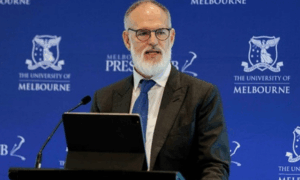
Michael Miller
Executive Chairman Australasia, News Corp Australia
In FY25, Michael Miller steered the company through another year of strategic innovation and renewed purpose, consolidating News Corp Australia’s position as the country’s largest and most influential digital publisher.
Commercially, Miller has maintained momentum by re-engineering News Corp’s advertising and data offerings.
FY25 was marked by the roll-out of shoppable video, expanded use of privacy-safe first-party data, and the continued success of the D_Coded digital event – now a major platform for showcasing advertiser innovation and audience insights.
Miller is also a strong voice in calling on the Australian Government to change Australian copyright law in reaction to AI bots scraping the work of News Australia.
“We need sustainable funding for journalism that serves democracy. Copyright laws protect the essence of what Australia represents – they help our voice flourish and ensure everyone gets a fair go.”

Matt Stanton
Chief Executive Officer & Managing Director, Nine Entertainment Co.
Matt Stanton is charting a turning point for Nine: one that moves the company from legacy media dependency toward digital and subscription-driven resilience, underpinned by content, sports, tech and data.
Since stepping in as CEO (formally in March 2025 after acting since late 2024), Stanton has overseen a sharp strategic reset at Nine, reshaping its leadership, culture and operating model to align the business for what comes next.
Over the past 12 months, under Stanton’s stewardship Nine delivered a full-year revenue of $2.7 billion, up around 2% on the prior year, and second-half EBITDA grew by 8%, driven by strong performances across Total Television, Stan, and Publishing. Stan, in particular, stood out supported by growth in streaming subscribers, investment in sports rights, notably the Premier League, and improved content including Stan Originals.
In a major capital move, Stanton oversaw the sale of Nine’s 60% stake in Domain to CoStar for $1.4 billion, allowing Nine to pioneer digital initiatives with $50 million already dedicated to modernisation: digitising decades of Nine’s broadcast and publishing archives, building out AI and data capabilities, and investing in unified consumer platforms.
Stanton’s impact goes beyond financials. He has restructured Nine into three vertically aligned divisions; Streaming & Broadcast, Publishing and Marketplaces, refreshed the Executive Team, embedded cultural reform and removing over A$80 million in costs in FY25, with more to come by FY27.
